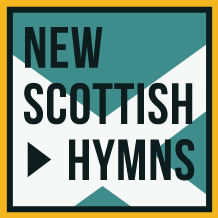Lyrics
Of the Father’s love begotten, ere the worlds began to be,
He is Alpha and Omega, He the source, the ending He,
Of the things that are, that have been,
And that future years shall see, evermore and evermore!
He is found in human fashion, death and sorrow here to know,
That the race of Adam’s children doomed by law to endless woe,
May not henceforth die and perish
In the dreadful gulf below, evermore and evermore!
O that birth forever blessèd, when the virgin, full of grace,
By the Holy Ghost conceiving, bare the Savior of our race;
And the Babe, the world’s Redeemer,
First revealed His sacred face, evermore and evermore!
O ye heights of heaven adore Him; angel hosts, His praises sing;
Powers, dominions, bow before Him, and extol our God and King!
Let no tongue on earth be silent,
Every voice in concert sing, evermore and evermore!
Christ, to Thee with God the Father, and, O Holy Ghost, to Thee,
Hymn and chant with high thanksgiving, and unwearied praises be:
Honor, glory, and dominion,
And eternal victory, evermore and evermore!
About the Song
Advent, Christmas, Jesus, Redemption, Salvation
Rev. 22:13; Rev. 1:8; Luke 1:35; Matt. 1:18, 21; Psalm 148:1-2
7058211
Greg de Blieck, Ellyn Oliver
Aurelius Prudentius,John Neale,Henry Baker,Traditional
Devotional
It’s a traditional medieval Latin plainchant, translated to English by John Neale in 1854, and Henry Baker in 1859. …through Christ, all our offerings are made acceptable Its purpose is to show both the historical narrative and context of the Christmas story, and explore the “triune” character of God – God the Father, God the Son, and God the Spirit are all of the same nature, three in one. It’s also helpful as a response to the wonder of the incarnation – although not an obvious Christmas carol choice, it is a proclamation that Christ is more than just a meek little baby, He is fully divine – God in flesh. There are nine verses in the original, but we selected our favourite five for the recording. (As an aside, it’s worth noting that many older hymns were written with a large number of verses in the understanding that congregations would select the ones most fitting for the specific church service – we are not expected to always sing all the verses, and neither are we to always sing the same ones.) We also changed the melody to fit into more of a memorable folk structure, with the last line repeated as a reflective refrain. “He is found in human fashion, Death and sorrow here to know, That the race of Adam’s children Doomed by law to endless woe, May not henceforth die and perish In the dreadful gulf below Evermore and evermore.” How do we engage with such grave subjects in our songs? To sing about the eternal doom of mankind without Christ in a major key, is that fitting? The fact is that our songs can never fully encapsulate the truths we are singing about – they will always fall short. A hymnwriter will write in the conscious hope that a truth can be better felt, better understood, through the use of evocative poetry and music. But we are all emotionally stunted – we never feel as we ought to feel, and our offerings, in and of themselves are embarrassingly insufficient. Thanks be to God for the great mystery – that through Christ, all our offerings are made acceptable, and that His power is made perfect in, not despite of, our weakness.

Get all We Shall All Be Changed resources with our album pack!
Download the MP3 recording, full sheet music, and all other available resources for all songs on the We Shall All Be Changed album at an exceptional value with our Album Pack bundle offer!
